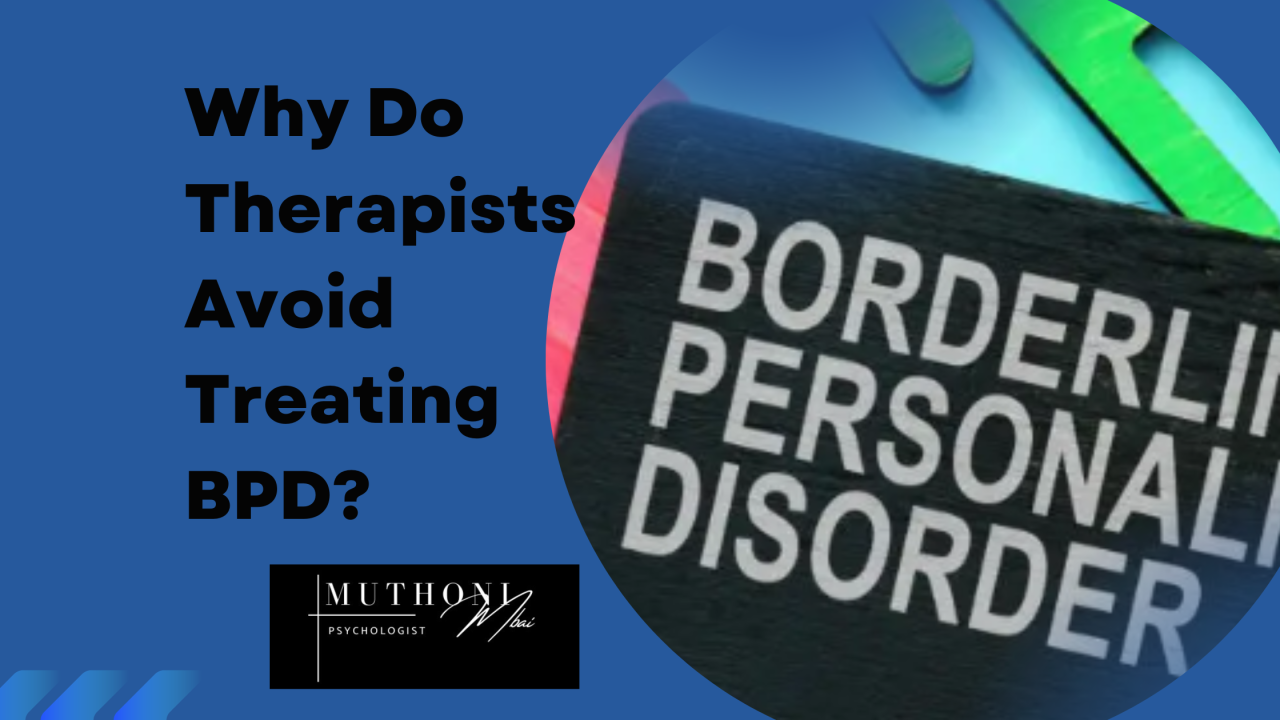
Why Do Therapists Avoid Treating BPD? – 4 Key Reasons

Borderline Personality Disorder (BPD) is one of the most misunderstood mental health conditions, not only by the general public but also by professionals within the mental health field. Therapists are trained to support individuals with diverse psychological challenges. With this in mind you may ask, why do some find it particularly difficult to treat clients with BPD?
Why do therapists avoid treating BPD? Is this perception entirely accurate? This article aims to provide insights into the challenges and misconceptions surrounding Borderline Personality Disorder (BPD) in the therapeutic setting while emphasizing the importance of seeking help regardless.
Why Do Therapists Find It Difficult to Treat BPD?
Treating BPD requires a unique therapeutic approach, often involving significant emotional investment, patience, and specialized training. Here are some reasons why therapists may find it challenging:
- Emotional Intensity: BPD is characterized by intense emotional experiences, including episodes of anger, sadness, and fear of abandonment. These emotions can sometimes be directed toward the therapist, creating a challenging dynamic that requires careful navigation.
- Splitting: Clients with BPD may exhibit “splitting,” where they perceive others as all good or all bad. This dynamic can sometimes affect the therapeutic relationship, requiring the therapist to remain grounded and consistent.
- Time Commitment: Evidence-based treatments for BPD, such as Dialectical Behavior Therapy (DBT), often require extended and intensive sessions, which not all therapists can accommodate.
- Stigma and Misunderstanding: Unfortunately, even within the mental health field, stigma surrounding BPD persists. Some therapists may feel unprepared or believe they lack the resources to offer effective treatment.

As a therapist, I have worked with many clients with BPD—so many that I have genuinely lost count. Each experience has taught me valuable lessons about resilience, hope, and the human capacity for change. While the work can be demanding, it is also incredibly rewarding. I firmly believe that individuals with BPD deserve compassion and access to therapy.
What Triggers BPD Splitting?
Splitting is a defense mechanism often observed in individuals with BPD, where they alternate between idealizing and devaluing people, situations, or themselves. Understanding the triggers of splitting can help caregivers and therapists respond empathetically. Common triggers include:
- Fear of Abandonment: Even minor changes in relationships, such as a canceled appointment or a delayed response, can evoke intense fear of being abandoned.
- Perceived Rejection: Misunderstandings or perceived criticism may lead to feelings of rejection, triggering splitting behaviors.
- Emotional Overwhelm: High-stress situations or emotionally charged interactions can overwhelm an individual with BPD, leading to black-and-white thinking.
Therapists work with clients to identify and address these triggers through techniques like mindfulness, emotion regulation, and interpersonal effectiveness. Caregivers and loved ones can also benefit from learning these strategies to support someone with BPD effectively.
What Happens if Borderline Personality Disorder Goes Untreated?
When left untreated, BPD can significantly impact an individual’s life. Common consequences include:
- Strained Relationships: The intense emotions and interpersonal challenges associated with BPD can lead to conflicts and difficulties maintaining stable relationships.
- Self-Harm and Suicidal Behavior: BPD is associated with a higher risk of self-harm and suicidal ideation, underscoring the importance of early intervention.
- Difficulty Maintaining Employment: Emotional instability and interpersonal conflicts can make it challenging to maintain a stable career.
- Co-occurring Disorders: Untreated BPD often coexists with other mental health conditions, such as anxiety, depression, or substance use disorders, further complicating recovery.
Therapy can make a profound difference, equipping individuals with tools to manage their emotions, build healthier relationships, and achieve personal goals. Despite the challenges, treatment is worth pursuing, as recovery is entirely possible with the right support.
Why Do Therapists Not Want to Work with BPD?
The perception that therapists avoid treating BPD is not entirely accurate. While some therapists may hesitate to work with BPD clients due to the disorder’s complexity and emotional intensity, many are deeply committed, skilled and dedicated to supporting individuals with BPD, utilizing evidence-based approaches like Dialectical Behavior Therapy (DBT) to foster meaningful progress and recovery.
The hesitation often stems from:
- High Risk of Burnout: The emotional demands of working with BPD clients can lead to therapist fatigue if proper boundaries and self-care are not maintained.
- Specialized Training Needs: Not all therapists are trained in approaches like DBT or Schema Therapy, which are particularly effective for BPD.
- Fear of Making Mistakes: The complexity of BPD can make therapists wary of unintentionally exacerbating symptoms.
Despite these challenges, I want to emphasize that the belief that therapists avoid treating BPD should not deter anyone from seeking help. Having worked with numerous BPD clients and still doing so with great dedication, my practice is always open to individuals with BPD. If you or someone you know is looking for support, please reach out to us through our Contact Page
Seeking Help for BPD
For individuals with BPD or their caregivers, seeking help can feel daunting, but it is an essential step toward healing. Here are some resources and tips:
- Find a Trained Therapist: Look for professionals experienced in treating BPD, especially those trained in DBT or Trauma-Focused Cognitive Behavioral Therapy (T-F CBT).
- Build a Support Network: Surround yourself with understanding friends, family, or support groups.
- Utilize Online Resources: Websites like National Education Alliance for Borderline Personality Disorder provide valuable insights and tools for both clients and caregivers.
- Practice Self-Care: Whether you are living with BPD or supporting someone who is, prioritizing self-care is crucial to maintaining mental and emotional well-being.
In conclusion, while therapists may face challenges in treating BPD, many are committed to providing compassionate and effective care. If you’re navigating life with BPD or supporting someone who is, don’t hesitate to reach out for help.



